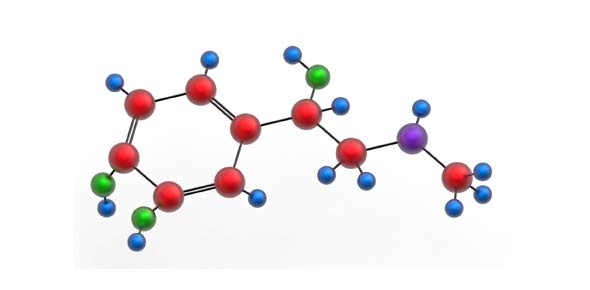Quiz Over Rocks And The Rock Cycle

Test yourself on the knowledge of rocks and of the rock cycle in this quiz! (8th grade level)
- 1.
How do igneous rocks form?
- A.
An already existing rock heats up but cools off before it can melt.
- B.
An already existing rock melts and cools off.
- C.
An already existing rock is taken apart into sediments, and different sediments compact together over time.
Correct Answer
B. An already existing rock melts and cools off.Explanation
Igneous rocks form when an already existing rock melts and then cools off. The melted rock, called magma or lava, solidifies and crystallizes as it cools, leading to the formation of igneous rocks. This process can occur beneath the Earth's surface, resulting in intrusive or plutonic igneous rocks, or at the surface through volcanic activity, leading to extrusive or volcanic igneous rocks.Rate this question:
-
- 2.
How do metamorphic rocks form?
- A.
An already existing rock heats up but cools off before it can melt.
- B.
An already existing rock melts and cools off.
- C.
An already existing rock is taken apart into sediments, and different sediments compact together over time.
Correct Answer
A. An already existing rock heats up but cools off before it can melt.Explanation
Metamorphic rocks form when an already existing rock is subjected to high temperatures and pressures, causing it to undergo physical and chemical changes. However, the rock does not reach its melting point and instead cools off, resulting in the formation of metamorphic rock. This process is known as metamorphism.Rate this question:
-
- 3.
How do sedimentary rocks form?
- A.
An already existing rock heats up but cools off before it can melt.
- B.
An already existing rock melts and cools off.
- C.
An already existing rock is taken apart into sediments, and different sediments compact together over time.
Correct Answer
C. An already existing rock is taken apart into sediments, and different sediments compact together over time.Explanation
Sedimentary rocks form when an already existing rock is weathered and eroded, breaking it down into smaller sediments. These sediments are then transported by wind, water, or ice and eventually settle in layers. Over time, the weight of the overlying sediments and the pressure from compaction cause the sediments to become compacted and cemented together, forming a solid sedimentary rock. This process is known as lithification.Rate this question:
-
- 4.
Which cools faster: intrusive or extrusive rock?
- A.
Intrusive
- B.
Extrusive
- C.
Neither
Correct Answer
B. ExtrusiveExplanation
Extrusive rock cools faster than intrusive rock because it is formed from lava that erupts onto the Earth's surface and cools rapidly in the open air. This rapid cooling allows the minerals in the rock to solidify quickly, resulting in a fine-grained texture. In contrast, intrusive rock forms from magma that cools slowly beneath the Earth's surface, allowing the minerals to crystallize over a longer period of time and creating a coarse-grained texture.Rate this question:
-
- 5.
Name two names that classify igneous rocks.
- A.
Foliated/non-foliated
- B.
Intrusive/extrusive
- C.
Metamorphic/sedimentary
Correct Answer
B. Intrusive/extrusiveExplanation
The correct answer is intrusive/extrusive. These terms classify igneous rocks based on their formation and location. Intrusive rocks are formed from magma that cools slowly beneath the Earth's surface, resulting in large crystal sizes. Examples include granite and diorite. On the other hand, extrusive rocks are formed from lava that cools quickly on the Earth's surface, resulting in small crystal sizes or even glassy textures. Examples include basalt and obsidian.Rate this question:
-
- 6.
Name two names that classify sedimentary rocks.
- A.
Foliated/non-foliated
- B.
Intrusive/extrusive
- C.
Metamorphic/sedimentary
Correct Answer
A. Foliated/non-foliatedExplanation
The given answer, "foliated/non-foliated," does not classify sedimentary rocks. It actually classifies metamorphic rocks. Foliated rocks have a layered or banded appearance due to the alignment of minerals, while non-foliated rocks do not have any specific alignment. Sedimentary rocks, on the other hand, are classified based on their formation process, such as through the accumulation and cementation of sediment particles. Therefore, the given answer is incorrect.Rate this question:
-
- 7.
What are the two main processes that convert sediment into sedimentary rock?
- A.
Compaction/cementation
- B.
Weathering/erosion
- C.
Deposition/weathering
- D.
Heating/cooling
Correct Answer
A. Compaction/cementationExplanation
The two main processes that convert sediment into sedimentary rock are compaction and cementation. Compaction occurs when the weight of overlying sediment compresses the layers beneath, causing them to become more tightly packed. Cementation happens when minerals, such as silica or calcium carbonate, fill the spaces between the sediment grains and bind them together. These two processes work together to transform loose sediment into solid sedimentary rock.Rate this question:
-
- 8.
What two processes do rocks undergo to become metamorphic?
- A.
Compaction/cementation
- B.
Weathering/erosion
- C.
Deposition/weathering
- D.
Heating/cooling
Correct Answer
D. Heating/coolingExplanation
Rocks undergo the processes of heating and cooling to become metamorphic. When rocks are subjected to high temperatures and pressures deep within the Earth's crust, their mineral structure and composition can change, resulting in the formation of metamorphic rocks. Heating causes the minerals in the rock to recrystallize, while cooling solidifies the newly formed minerals. These processes can occur due to tectonic activity, such as the movement of tectonic plates or the intrusion of magma into the Earth's crust.Rate this question:
-
Quiz Review Timeline +
Our quizzes are rigorously reviewed, monitored and continuously updated by our expert board to maintain accuracy, relevance, and timeliness.
-
Current Version
-
Feb 02, 2024Quiz Edited by
ProProfs Editorial Team -
Dec 14, 2011Quiz Created by
Pbrox4563
 Back to top
Back to top


